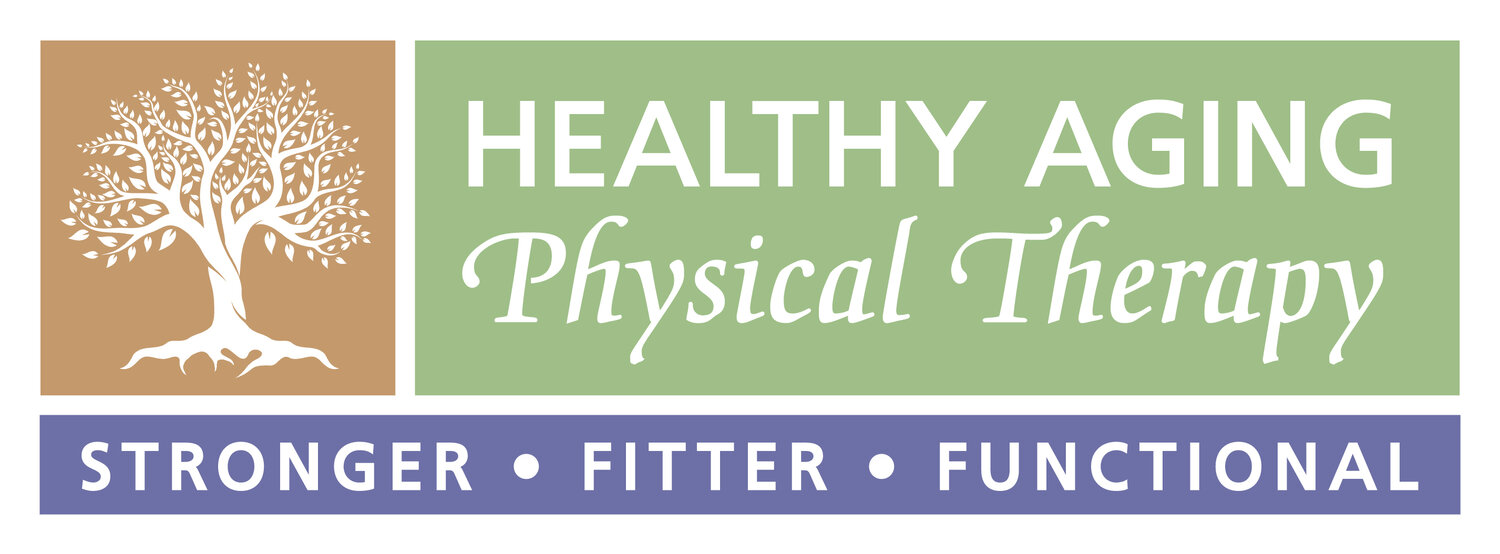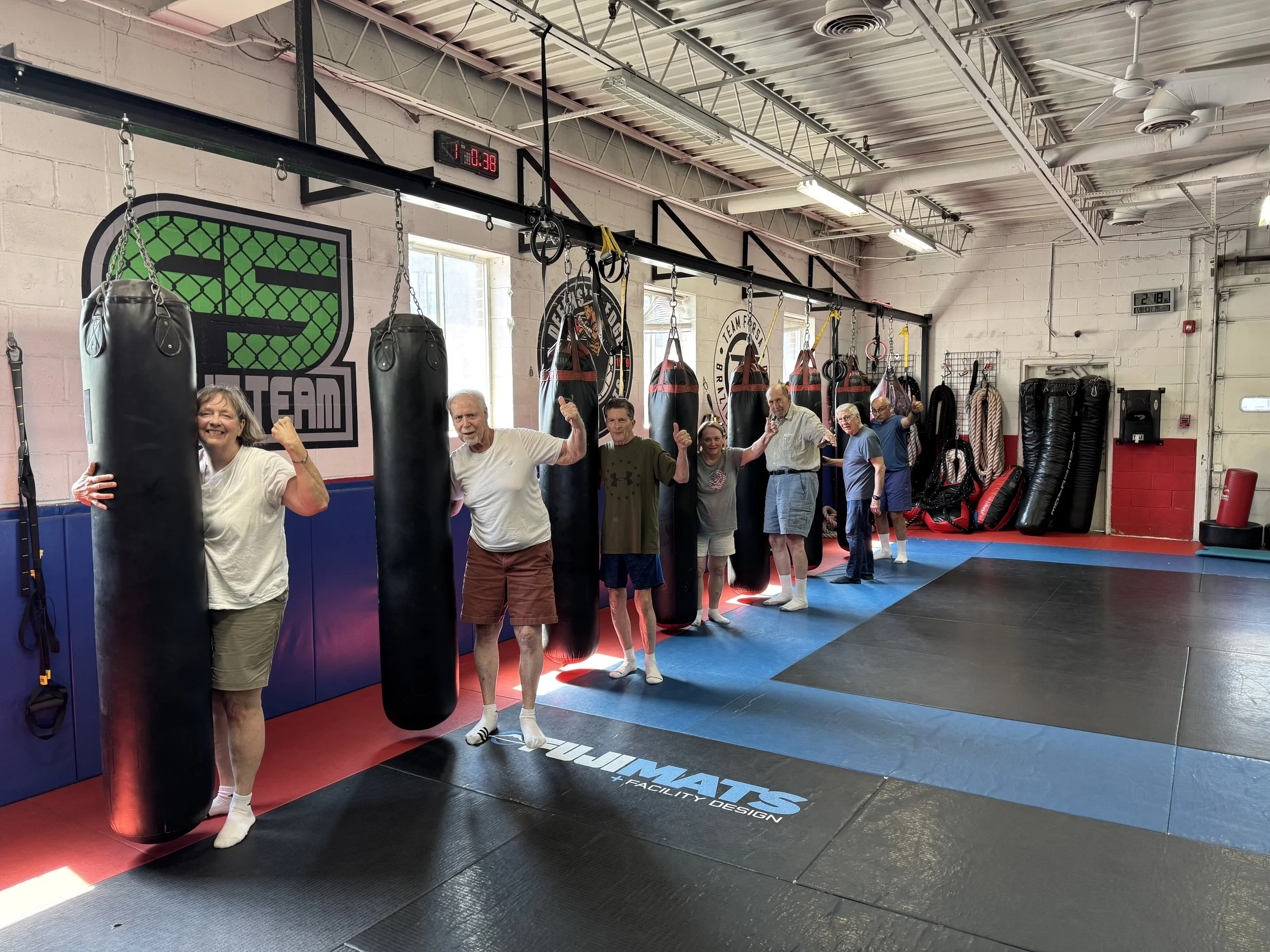Healthy Aging Physical Therapy Monthly Blog
Cutting Through the Chaos: Creating Effective Frameworks for Complex Patients
Many older adults don’t fit neatly into a single diagnosis—and neither does their care. In Cutting Through the Chaos: Creating Effective Frameworks for Working with Complex Patients, Dr. Katie Wadland, PT, DPT, Board-Certified Geriatric Clinical Specialist, shares how Healthy Aging Physical Therapy helps clinicians and families navigate the challenges of treating medically complex patients. Learn how to identify priorities, layer support, and build collaborative care plans that promote safety, independence, and resilience for older adults with multiple conditions.
Written by: Dr. Katie Wadland, PT, DPT, Board-Certified Geriatric Clinical Specialist Owner: Healthy Aging Physical Therapy
If you’ve ever worked with, or been, a patient who seems to have more going on that meets the eye, you know how challenging it can be. Fortunately, these are also often the most rewarding patients - and, most importantly, the ones who need us most.
At Healthy Aging Physical Therapy, our team specializes in exactly that: caring for complex patients—people with multiple diagnoses, long medical histories, and functional challenges who often feel like no one knows where to start. They’re the ones who have seen five other therapists, have a dozen specialists, and still feel stuck.
Why Our Patients Are So Complex
When you’re in physical or occupational therapy school, you learn about impairments in isolation.
A hip fracture? You study how to rebuild strength and balance.
A cardiac patient? You learn to monitor vitals and improve endurance.
A neurological condition? You focus on motor control, coordination, and safety.
But real-world patients with geriatric, neurologic, and complex medical needs don’t fit in tidy boxes. The people we serve are living with multiple comorbidities, often taking many medications, and facing social and emotional challenges that go far beyond their diagnosis list.
For example, many of our patients with Parkinson’s disease also experience osteoarthritis, chronic pain, memory loss, anxiety, and depression - and often have a partner who is also aging and managing their own medical issues to boot. Similarly, a patient referred for “hip fracture” is rarely just an orthopedic case. The fracture may have resulted from a fall, which stemmed from a combination of weakness, balance impairments, cardiac symptoms, and home safety challenges. Many live alone, with limited support and a history of sedentary behavior.
It’s no wonder that walking into these homes for an evaluation can feel overwhelming, even for seasoned clinicians.
Many of these individuals have already been discharged from other settings because progress stalled, the situation was too complicated, or insurance coverage ran out. Over time, we’ve become the go-to practice for these patients—the ones other providers refer when they aren’t sure what else to do. In many cases, we become the last stop—the “hail Mary” for patients who are exhausted from circling through the healthcare system.
So, how do we help?
Our Framework for Treating Complex Patients
Through experience and teamwork, we’ve developed a simple, realistic framework that helps our clinicians navigate these challenging situations - one that keeps both patient and therapist grounded, hopeful, and effective.
Whether you’re a therapist reading this, a patient with a complex background, or a caregiver trying to support a loved one, I hope these strategies help you cut through the chaos and find a starting point that leads to progress.
1. Focus on What Matters Most and Not Everything at Once
When faced with a dozen problems, it’s natural to want to fix them all. But that’s a recipe for overwhelm, and, inevitably, an ineffective therapeutic approach.
Instead, we teach our therapists to start by asking:
“What are the top one or two things we can help with right now that will most improve this person’s quality of life, safety, and independence?”
Sometimes that means addressing strength, balance, or mobility. Other times, it’s about helping the patient move again after weeks (or months) of fear and inactivity. Sedentary behavior, whether from pain, fear, or fatigue, triggers a cascade of physical and emotional decline and often, interrupting this cycle can be an important first step. Even small steps toward safe, confident movement can change everything. Sometimes, a compensatory approach is the right starting point: helping a patient obtain the proper wheelchair, walker, or other durable medical equipment to restore access to their home and community.
Time after time, we’ve learned that small wins matter. They build trust, confidence, and momentum - all critical ingredients for rapport and long-term success.
2. Layer in Support
We remind our team (and ourselves) that we can’t fix everything - and that’s okay. Somethings aren’t ‘fixable’ and other things are outside of our scope and capabilities.
Our role is to make a meaningful difference where we can, while also building a web of support around the patient to provide support for ‘the other things’. That often means:
Connecting patients with mental health providers when mood disorders or anxiety is a barrier
Coordinating with care team physicians and pharmacists to address medication-related issues
Referring our patients to trusted home health aides, elder services, or aging life-care specialists
Providing resources for community programs, support groups, and case managers
It’s not about doing it all ourselves - it’s about building the right team around each patient, one layer at a time.
3. Collaboration Is Key
When you work with a Healthy Aging therapist, you may only see one person walk through your door—but behind that therapist is an entire network of expertise.
Our team includes specialists in neurology, orthopedics, geriatrics, vestibular therapy, and cardiopulmonary rehab. We collaborate behind the scenes through discussion boards, case consults, and joint visits - bringing fresh ideas, new eyes and diverse perspectives to every complex case. Sometimes that collaboration means I’ll step in for a Complex Case Visit, working alongside the treating therapist to strategize solutions. Other times, the team shares insights online, helping each other troubleshoot mobility challenges, medication effects, or behavioral barriers.
That culture of teamwork is one of our greatest strengths—and one of the biggest reasons I feel our patients make progress where others have stalled.
4. Think Long-Term
Complex patients rarely fit neatly into a six-week plan of care. Their needs evolve, new issues arise, and maintaining stability often becomes the goal as much as improvement.
That’s why we emphasize continuity - treating each patient as someone we’ll likely know for years. When a patient is ready to discharge, we make sure:
A comprehensive post-discharge home program is in place
The patient has been connected with the appropriate community and medical supports
We have established a clear plan for future follow-up
For many, we transition them into a Maintenance Plan of Care under Medicare Part B, or into our Wellness program, Wellness365, where they continue to receive guided exercise and ongoing support to prevent decline.
Because our ultimate goal isn’t just short term rehab - it’s recovery and resilience.
What This Means for Patients and Families
If you’re a patient, caregiver, or family member feeling frustrated that “no one knows how to help,” please know: you’re not alone, and your situation isn’t hopeless.
Working with complex conditions takes time, teamwork, and the right perspective. The most important first step is finding professionals who know how to cut through the chaos - and, most importantly, who see you as a person first, not just a list of diagnoses, which is the heart of what we do at Healthy Aging Physical Therapy.
Don’t Fall this Fall! Your Guide to Preventing Falls and Staying Strong
Fall Prevention Tips for Older Adults | Healthy Aging Physical Therapy
Discover evidence-based fall prevention strategies using the CDC STEADI framework, including strength and balance training, vestibular therapy, home safety modifications, and fall preparedness education. Learn how Healthy Aging PT helps older adults reduce fall risk and stay independent through 1:1 therapy, personal training, and group classes like Strong and STEADI and Fit & Fearless.
As the leaves begin to fall, let’s talk about a more serious kind of fall - one that affects 1 in 4 older adults each year. Of those, 1 in 5 results in serious injury, including broken bones and head trauma. Even more concerning: once someone experiences a fall, their risk of falling again doubles.
But here’s the good news - falls are not an inevitable part of aging. There are proven, evidence-based strategies that can help reduce fall risk, improve confidence, and even teach people how to fall more safely when accidents happen. And Healthy Aging Physical Therapy is here to help you or your loved ones put those strategies into action.
CDC STEADI Initiative and Fall Prevention
According to the CDC’s STEADI Initiative (Stopping Elderly Accidents, Deaths and Injuries), the key pillars of fall prevention include:
Screening for fall risk using tools like the Timed Up and Go (TUG) or 4-Stage Balance Test
Strengthening and balance training that’s appropriate for age and ability
Medication review and management
Vision and vestibular assessment
Home safety modifications
Education on what to do in the event of a fall
[Source: CDC STEADI Program – https://www.cdc.gov/steadi/]
At Healthy Aging Physical Therapy, we’ve structured our programs around this proven framework to deliver the most effective strategies for fall prevention. Keep reading to learn how we put each pillar into practice.
Screening for Fall Risk
During our therapy evaluations, our licensed physical and occupational therapists conduct standardized, evidence-based fall risk screens, using tools like:
Timed Up and Go (TUG)
4-Stage Balance Test
5 Times Sit to Stand
Berg Balance Scale
Backwards Walking Speed
Gait speed analysis
These assessments help us identify your current fall risk level, evaluate your balance and mobility, and guide the creation of a personalized plan of care. At Healthy Aging, we believe knowledge is power—so we don’t just give you a score, we help you understand what it means. Using age- and gender-based normative values and clinically validated cut-off scores, we compare your results to your peers and determine what they indicate about your individual fall risk. From there, we build a care plan that addresses specific areas of deficit and set clear, measurable goals. These goals allow us to track progress, ensure what we're doing is effective, and pivot when needed to keep you moving forward safely.
Strengthening and Balance Programs
Strength and balance are woven into nearly everything we do here at Healthy Aging Physical Therapy, because we know just how critical they are to aging well. Every Physical Therapy and Occupational Therapy plan of care we create includes targeted interventions to build strength, improve balance, and reduce fall risk. But we also go above and beyond traditional therapy by offering extended support through our Wellness365 program, where specially trained personal trainers work with older adults to maintain and build strength long after therapy ends. For those who enjoy the energy of group fitness, we offer evidence-based classes like Strong and STEADI, which blends balance training, reactive strategies, and floor recovery skills, and Fit & Fearless, our adaptive martial arts program that teaches safe falling techniques and improves agility and body control. Whether you’re just getting started or continuing your wellness journey, our strength and balance programs provide the foundation for safer, more confident movement.
Medication Review and Management
While we don’t prescribe or manage medications directly, our therapists play an important role in identifying potential medication-related fall risks. During every evaluation, we review your current medication list and screen for drugs that may contribute to dizziness, fatigue, or low blood pressure—such as sedatives, antihypertensives, and certain pain medications. When we identify red flags, we collaborate with your physician, nurse practitioner, or pharmacist to recommend a formal medication review or suggest adjustments that may reduce your risk of falling.
Vision and Vestibular Assessment
Our Vestibular Therapy services are provided by clinicians specially trained to treat conditions such as BPPV, vestibular hypofunction, and motion sensitivity. Addressing these issues can significantly improve stability, reduce dizziness, and restore confidence in movement, particularly during sudden turns, head movements, or nighttime activities when balance is most challenged. In addition to vestibular care, we also consider vision as an important piece of the fall prevention puzzle. While we don’t provide eye exams, we screen for vision impairments during PT and OT sessions and refer to optometry or ophthalmology when needed. We also help patients address visual-vestibular integration challenges and provide guidance on modifying the home environment to better accommodate vision changes. Want to learn more? Check out our Vestibular and Dizziness page here.
Home Safety Assessment and Modification
At Healthy Aging Physical Therapy, home safety is an essential part of every plan of care. Our Physical and Occupational Therapists assess your living environment during therapy visits to identify potential fall hazards and barriers to independence. We evaluate factors such as flooring, lighting, stairways, bathroom access, and furniture layout, and we provide tailored recommendations to improve safety and function. When modifications are needed, we help coordinate referrals to trusted professionals who can install grab bars, ramps, railings, and other accessibility features. For those seeking a more in-depth evaluation, either in conjunction with therapy or on its own, we also offer our Home Assessment & Resource Program (HARP). This program provides a focused, expert evaluation of your home environment with personalized safety recommendations and resource navigation to support aging-in-place confidently and safely.
Fall Preparedness Education
At Healthy Aging Physical Therapy, we also believe fall preparedness is just as important as fall prevention—because even with the best strategies in place, accidents can still happen. That’s why our therapists receive advanced training in fall preparedness education, including safe falling techniques, floor recovery strategies, and how to respond if a fall occurs. We routinely make getting on and off the floor a core part of therapy, recognizing that this essential skill is often overlooked in traditional rehab settings. Whether someone is learning to recover independently after a fall or safely call for help when needed, our goal is to build both skill and confidence. For those who want to go even deeper, our Fit & Fearless program offers a supportive group environment where participants practice safe landing techniques, controlled descents, and reactive balance drills inspired by adaptive martial arts. It's an empowering, innovative approach to fall preparedness that helps older adults feel strong, capable, and ready for whatever life throws their way.







